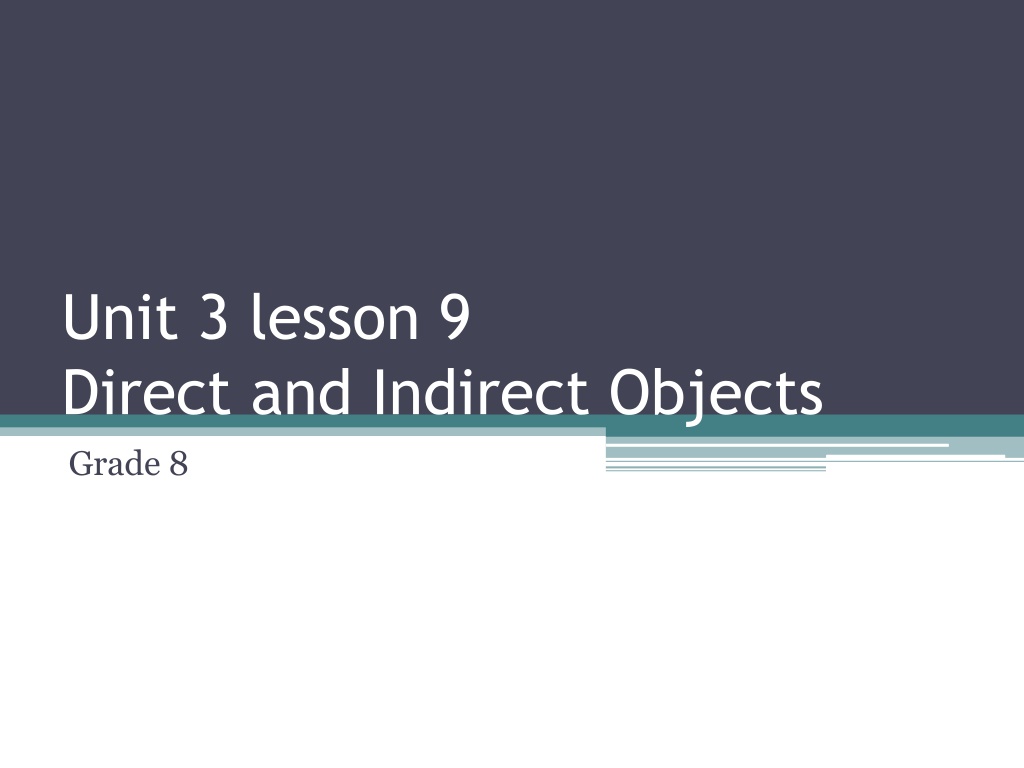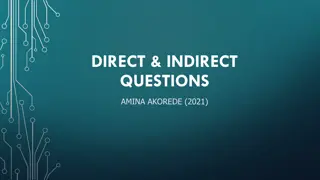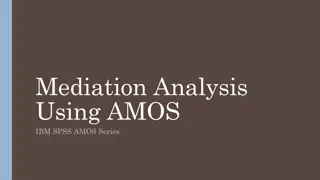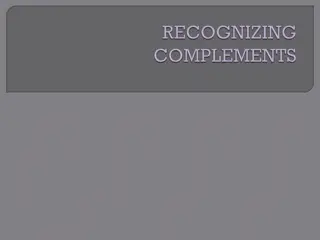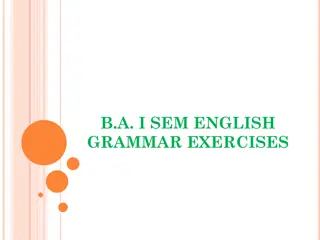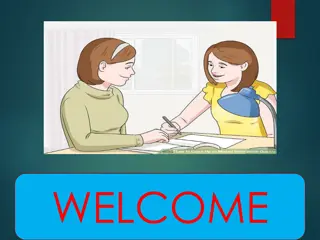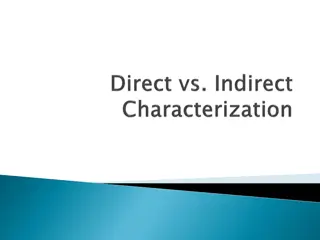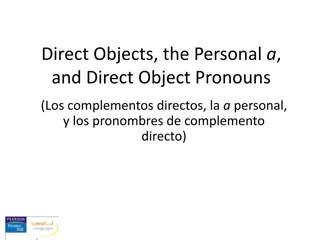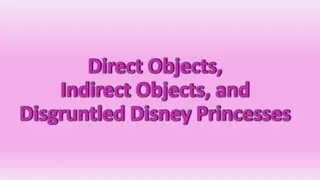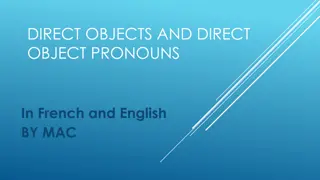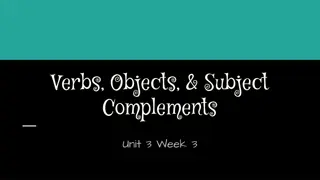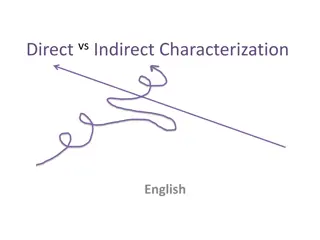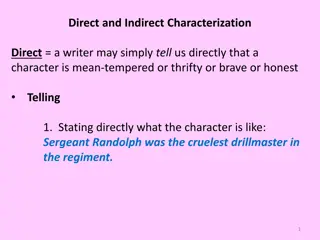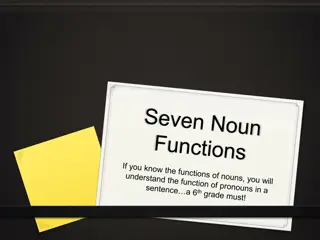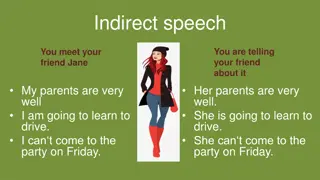Understanding Direct and Indirect Objects in Grammar
Direct and indirect objects are essential components of sentences, helping clarify the action and recipients involved. Direct objects receive the action directly, answering the questions "Whom?" or "What?" Indirect objects indicate to whom or for whom the action is done, always appearing between the verb and the direct object. It's important to differentiate between verbs with objects and intransitive verbs. The examples provided highlight the usage of direct and indirect objects in sentences.
Download Presentation

Please find below an Image/Link to download the presentation.
The content on the website is provided AS IS for your information and personal use only. It may not be sold, licensed, or shared on other websites without obtaining consent from the author. Download presentation by click this link. If you encounter any issues during the download, it is possible that the publisher has removed the file from their server.
E N D
Presentation Transcript
Unit 3 lesson 9 Direct and Indirect Objects Grade 8
Direct and Indirect Objects Transitive verbs are action verbs They have objects
Direct Objects A direct object is a noun in the predicate that the action is directed to They answer the QS Whom? What? VERB OBJECT Directs its action on an
Examples The girl bought a pair of roller-skates. Bought what? Water, ice and bread did not remove the burning sensation. Remove what? Her mom called her to do the laundry. Called who?
Compound direct objects There might be a sentence with one verb and more than one direct object The school nurse gave me an ice pack and medicine. My mother cooked rice and vegetables.
PLEASE!!!!! Do not be confused by words in the predicate and think that they are objects. If they answer How? When? Where? then they are NOT objects Since those verbs have no objects, they are intransitive verbs.
Indirect Objects An indirect object tells To whom? For whom? To what? For what? the action of the verb is done.
They are always either a noun or a pronoun They come between the verb and the direct object
Examples She wrote him a letter. We got her a necklace. Together, we bought our teacher a bouquet of flowers. The officer gave her a last chance. The team gave him a trophy.
TO or FOR Indirect Object If the words to or for appear before a noun or a pronoun, then it is not an indirect object Example: She wrote a letter to her friend. She did the homework for him.
Can you do this? YES WE CAN!!! My mom washed my uniform. My uncle got me a laptop. My new car had dirt on it. She brought her daughter to me. The shampoo cleaned her hair instantly. She sprayed the can. She gave the chocolate to her.
Good news. Homework!! Do book pages 141 and 142 Do related workbook pages I KNOW IM MEANNNNN!!!!
